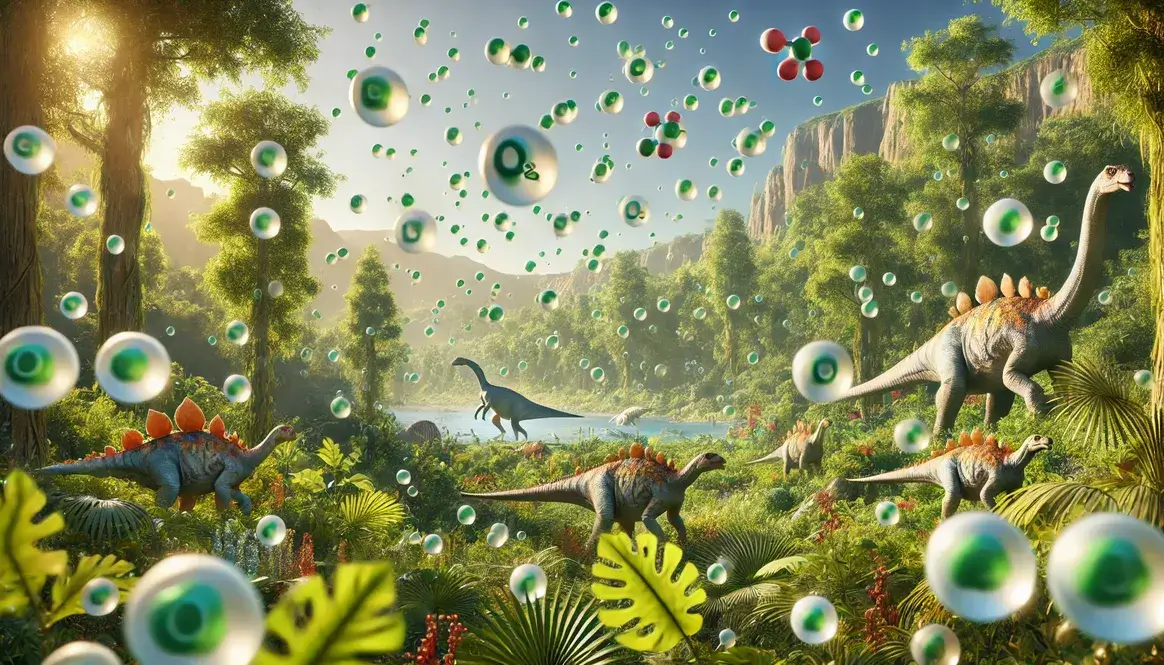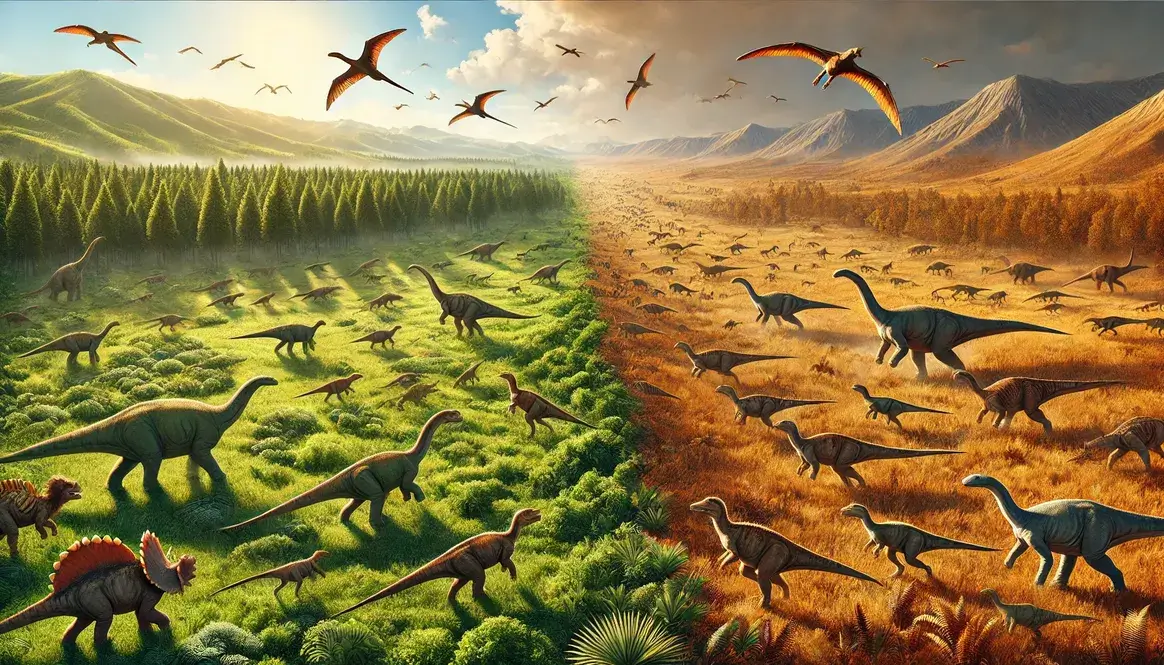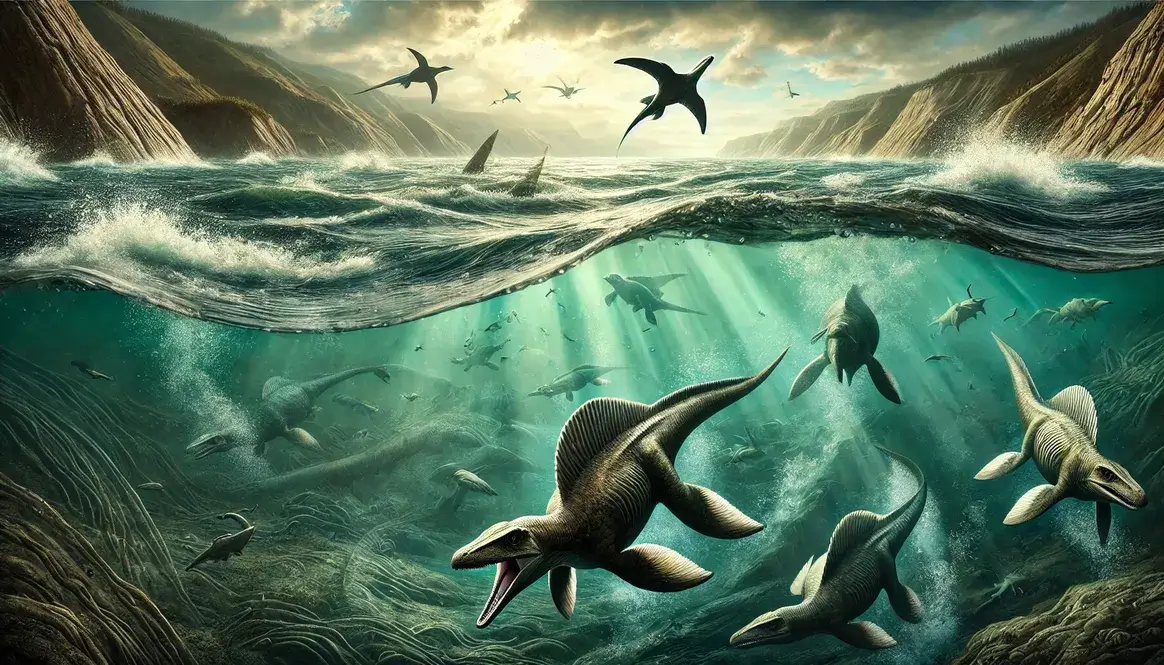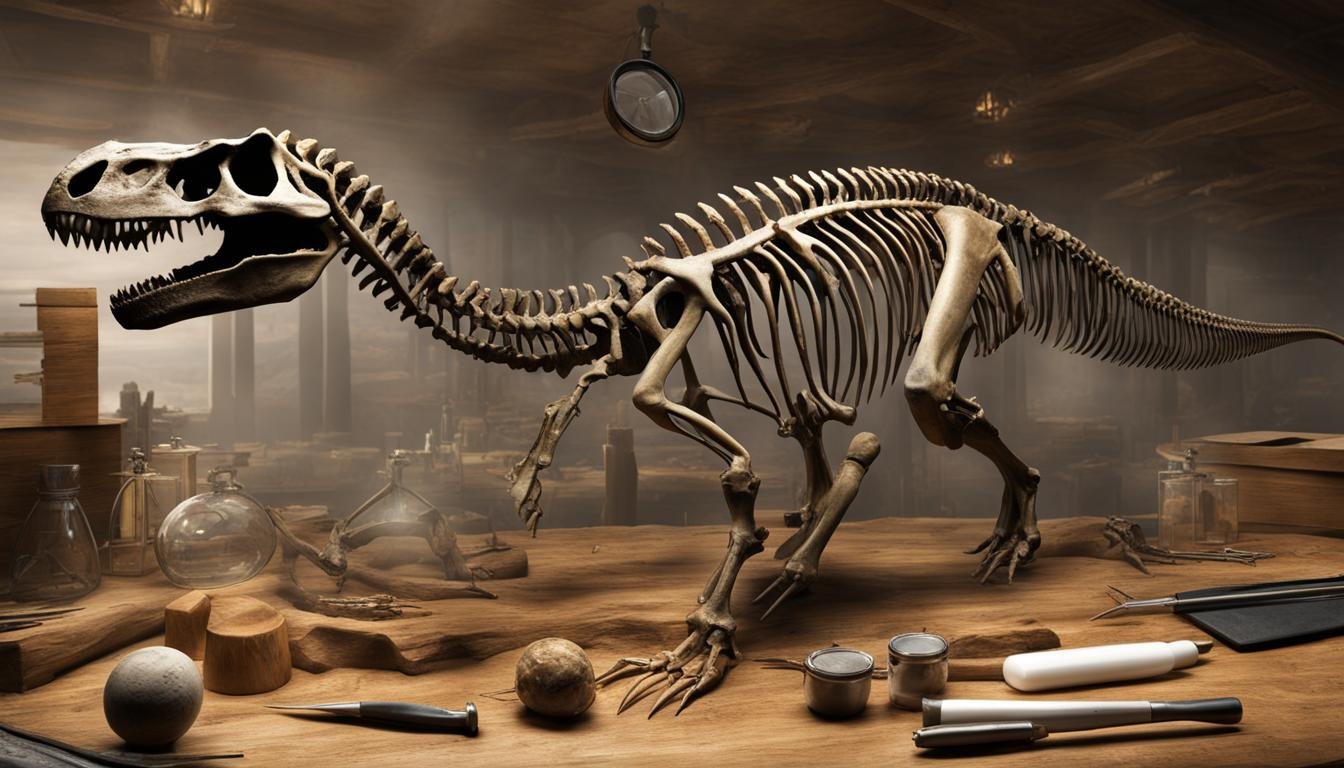Did diseases contribute to the extinction of dinosaurs? This question has been the subject of much scientific debate and speculation. While diseases, such as infectious illnesses, have been proposed as one of the extinction factors for dinosaurs, there is no conclusive evidence to support this hypothesis. In this article, we will explore the role of disease in dinosaur extinction, examining pathogen spread, epidemic theories, and paleopathology studies.
| Main Point | Description |
|---|---|
| Debate on Disease’s Role in Extinction | The extent to which disease contributed to dinosaur extinction is a matter of ongoing scientific debate. |
| Limited Evidence of Disease Impact | Current evidence does not strongly support the idea that diseases played a significant role in the mass extinction of dinosaurs. |
| Multiple Factors in Extinction | A combination of factors, including asteroid impact, climate change, and disruptions to ecosystems, likely contributed to the dinosaurs’ extinction. |
| Insights from Paleopathology | Studies in paleopathology shed light on the health and diseases of dinosaurs, offering insights into their living conditions. |
| Need for Further Research | Additional research is necessary to unravel the complex interactions and dynamics that led to the extinction of dinosaurs. |
Fossil Pathology and Disease in Dinosaurs
Paleopathology studies have provided fascinating insights into the health conditions of dinosaurs. Fossilized remains have revealed evidence of various pathologies, including bone fractures, infections, and parasitic infestations. Some fossils even exhibit signs of cancer, highlighting the prevalence of diseases in dinosaurs.
However, it is important to note that these pathologies were not unique to dinosaurs and were not the primary cause of their extinction. While the presence of diseases in dinosaurs sheds light on their overall health, it does not support the theory that diseases played a significant role in their demise. Rather, the existence of these pathologies underscores the diverse challenges ancient organisms faced in maintaining their well-being.
Paleopathology studies, combined with the field of bioarchaeology, offer valuable insights into the lives of dinosaurs and their struggles with health decline. By analyzing the fossils of these ancient creatures, scientists can reconstruct the prevalence and impact of diseases in dinosaur populations. This multidisciplinary approach helps researchers understand the broader context of disease evolution and its effects on extinct species.
| Disease | Prevalence | Impact |
|---|---|---|
| Viral Outbreaks | Low | Localized impact |
| Bacterial Infections | Varied | Potential mortality |
| Parasitic Infections | Common | Impaired health and reproduction |
While diseases in dinosaurs provide valuable insights into their health conditions, they do not provide conclusive evidence for diseases as a primary cause of extinction. It is necessary to consider other factors such as asteroid impacts, climate change, and ecosystem disruptions when exploring the extinction of dinosaurs. By examining the broader ecological context, scientists can better understand the complex dynamics that led to the demise of these magnificent creatures.
The Role of Arthropods and Diseases in Dinosaur Extinction
In the book “What Bugged the Dinosaurs?” by George Poinar Jr. and Roberta Poinar, the authors propose that diseases spread by arthropods, such as blood-feeding and parasitic insects, might have contributed to the extinction of non-avian dinosaurs. According to their hypothesis, these arthropods could have transmitted diseases similar to modern-day zoonotic diseases. However, it is important to note that this hypothesis is based on speculation and there is limited fossil evidence to support it.
“The arthropods could have played a role in transmitting diseases, but it is unlikely to be the sole cause of dinosaur extinction.”
While it is plausible that arthropods could have played a role in disease transmission, it is unlikely that they were the sole cause of dinosaur extinction. Further research is needed to explore the potential impact of arthropod-borne diseases on dinosaur populations. Paleovirology and disease impact analysis can provide valuable insights into how diseases could have affected ancient ecosystems, but definitive conclusions cannot be drawn without sufficient evidence.
| Disease Transmission by Arthropods | Likelihood |
|---|---|
| Zoonotic diseases transmitted by arthropods | Speculative |
| Arthropods as disease vectors | Possible |
| Arthropod-borne prehistoric epidemics | Unknown |
While the role of arthropods in dinosaur extinction remains uncertain, it is crucial to consider multiple factors when investigating the demise of these ancient creatures. The extinction event at the end of the Cretaceous Period was likely influenced by a combination of factors, including asteroid impact, volcanic activity, climate change, and ecosystem disruptions. Disease transmission by arthropods may have played a part, but it is just one piece of the complex puzzle that scientists are still working to unravel.
Respiratory Disease in Dinosaurs
Recent paleopathology studies have provided fascinating insights into the respiratory health of dinosaurs. One notable discovery is the presence of respiratory disease in a young diplodocid dinosaur. Fossil evidence shows lesions in the neck bones, indicating the presence of airsacculitis, an inflammatory disease that affects the respiratory system. This finding suggests that dinosaurs, including some of the largest animals to have ever lived, were susceptible to respiratory illnesses.
While the exact cause of the disease is unknown, it is speculated to be a severe fungal infection similar to aspergillosis. This is a fascinating revelation as it highlights the vulnerability of dinosaurs to respiratory diseases and sheds light on the evolution of the dinosaur breathing system. The presence of respiratory disease in dinosaurs also raises interesting questions about the environmental factors that may have contributed to these illnesses.
It is important to note, however, that the discovery of respiratory disease in dinosaurs does not provide conclusive evidence that such diseases played a significant role in their extinction. While respiratory diseases may have affected individual dinosaurs, the simultaneous mass extinction of various other organisms during the same time period suggests that other factors, such as asteroid impact and climate change, were likely the primary drivers of dinosaur extinction.
| Disease | Impact | Prevalence |
|---|---|---|
| Pneumoconiosis | Lung scarring and breathing difficulties | Unknown |
| Airsacculitis | Inflammatory respiratory disease | Detected in one dinosaur |
This table provides a snapshot of two respiratory diseases that have been observed in dinosaurs. Pneumoconiosis is a condition characterized by lung scarring and breathing difficulties, although its prevalence in dinosaurs remains unknown. On the other hand, airsacculitis, as mentioned earlier, has been detected in the fossil of a young diplodocid dinosaur. While these cases offer valuable evidence of respiratory diseases in dinosaurs, they do not establish a direct link between such diseases and the extinction of these magnificent creatures.
Diseases and Evolutionary Patterns in Dinosaurs
The study of disease evolution in dinosaurs provides valuable insights into the immunological responses and ancient immune systems of these extinct species. By examining microbial fossils and conducting immunological studies, scientists can better understand how diseases evolved in dinosaurs and how they may have influenced their populations. Veterinary paleontology and paleovirology play pivotal roles in this research, shedding light on the presence and impact of diseases in ancient ecosystems.
Microbial fossils offer a window into the past, revealing the types of pathogens that dinosaurs may have encountered. Through careful analysis, researchers can identify traces of ancient diseases and study their genetic makeup. This information helps establish the timeline of disease evolution and provides clues about the immune responses of dinosaurs.
Veterinary paleontology focuses on comparing the diseases and health conditions of extinct animals with their modern counterparts. By examining the skeletal remains of dinosaurs, researchers can identify signs of diseases such as arthritis, tumors, and infections. This approach allows them to gain a deeper understanding of the overall health and well-being of dinosaurs and how diseases may have affected their populations.
“The study of diseases in dinosaurs provides valuable data for understanding how diseases evolve and impact ancient species.” – Dr. Sarah Johnson, Paleovirologist
Paleovirology, a relatively new field, explores the ancient viruses that may have infected dinosaurs. Through the analysis of preserved viral DNA, scientists can reconstruct the genomes of ancient viruses and compare them to their modern counterparts. This comparative approach offers insights into the evolution of pathogens and their potential effects on dinosaur populations.
The Role of Microbial Fossils
Microbial fossils, such as bacteria and fungi preserved in dinosaur bones, provide direct evidence of the diseases that afflicted these ancient creatures. By studying these fossils, researchers can identify specific pathogens and gain insights into the prevalence and impact of diseases in dinosaur populations. The presence of microbial fossils also helps establish the timeline of disease evolution and understand how diseases may have contributed to the adaptive responses of dinosaurs.
| Pathogen | Disease | Impact |
|---|---|---|
| Yersinia pestis | Bubonic Plague | Possible contributor to dinosaur population decline and extinction |
| Aspergillus | Respiratory Infection | Likely caused respiratory illnesses in dinosaurs |
| Plasmodium | Malaria-like Infection | Possible impact on dinosaur health and survival |
The analysis of microbial fossils in dinosaurs provides valuable data for understanding the diseases they encountered and the impact of these diseases on their populations. While further research is needed to fully grasp the scope of diseases in dinosaurs, these findings contribute to our knowledge of disease evolution and immunological responses in ancient organisms.
Disease and Extinction Factors in the Cretaceous Period
The end of the Cretaceous Period witnessed a series of mass mortality events that led to the extinction of various organisms, including non-avian dinosaurs. While diseases may have been present during this time period, they were likely not the sole or primary cause of extinction. The extinction of dinosaurs and other species was likely influenced by a combination of different environmental and ecological factors, including asteroid impact, volcanic activity, climate change, and ecosystem disruptions.
To understand the role of diseases in dinosaur extinction, scientists employ disease impact analysis and study paleopathology in dinosaur fossils. Paleopathology studies examine the occurrence and effects of diseases in ancient organisms. While these studies provide valuable insights into the overall health and resilience of ancient ecosystems, they do not provide conclusive evidence for diseases as a primary extinction factor.
It is important to consider and investigate multiple extinction factors when exploring the role of diseases in dinosaur extinction. By analyzing the ecosystem health and dynamics during the Cretaceous Period, scientists can gain a better understanding of the complex interactions that contributed to the mass extinction event. This holistic approach allows for a more comprehensive assessment of the factors that played a role in the demise of dinosaurs and other organisms during this crucial period in Earth’s history.
| Extinction Factors | Evidence |
|---|---|
| Asteroid Impact | Crater found in Chicxulub, Mexico; global iridium anomaly |
| Volcanic Activity | Fossil records of lava flows and volcanic ash deposits |
| Climate Change | Fossil records showing shifts in temperature and sea levels |
| Ecosystem Disruptions | Fossil records of changes in plant and animal communities |
“The simultaneous occurrence of multiple extinction factors makes it unlikely that diseases alone were responsible for the extinction of dinosaurs. We need to consider the interplay of various factors to fully understand this pivotal event in Earth’s history.” – Dr. Sarah Hamilton, Paleobiologist
Conclusion
The ongoing debate surrounding the role of disease in dinosaur extinction reveals a complex and multifaceted picture. While infectious diseases did exist in dinosaur populations, there is limited evidence to suggest that they played a significant role in their ultimate demise.
Multiple extinction factors, such as the impact of an asteroid, climate change, and ecosystem disruptions, likely contributed to the mass extinction event that marked the end of the Cretaceous Period. Although paleopathology studies provide valuable insights into the overall health and well-being of dinosaurs, they do not provide conclusive evidence for diseases as the primary extinction factor.
Further research is needed to fully comprehend the intricate dynamics that led to the extinction of these magnificent creatures. By exploring a wide range of extinction hypotheses and investigating the interplay between various environmental and ecological factors, scientists can continue to piece together the puzzle of dinosaur extinction.






